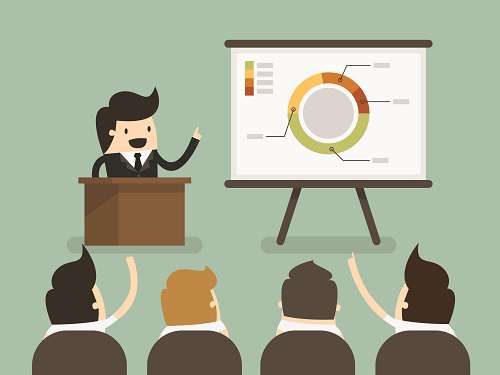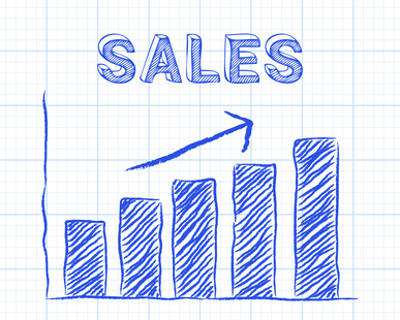Many of us don't really understand the difference between B2B and B2C sales strategies. This can lead to a lot of time and money wasted with fruitless attempts at selling your product. When you are contemplating your sales strategy, the item, price and type of company all figure into the equation, but what really matters is who you are trying to sell to. More specifically, are you targeting the business market or the consumer market? Here we identify several critical differences between B2B and B2C sale strategies that will help to improve your sales techniques.

If you'd like to learn more about selling skills, why not take a look at how we can help?
Boost your sales skills with our online courses.
RRP from $39 – limited time offer just
$12.99
1. Emotional Response vs. a Rational Response
The difference between B2B and B2C business is that retail sales are down to an emotional response, based on a perceived need, while corporate sales are well thought through and planned. This variation in buying must be addressed, as sales strategies cannot be used in the same fashion in both sectors.
The consumer market is geared for the customer to fall in love with the product; this consists of clever marketing ploys such as slogans and mascots to present the product in an attractive way, therefore playing to the emotions of the consumer. This is in stark contrast to the corporate division, where facts and temptations of how their company will benefit if they purchase your product or service take precedence.

2. Price Differences
While there are some exceptions, such as with brand new Ferraris, it is generally universally considered that B2C prices are less than B2B ones. Even a large expenditure with a consumer sale is insignificant when compared to the capital that is transferred between two large B2B companies.
This large price difference is one of the driving forces in the need to cultivate and nurture a lead, in order to create a general consensus amongst leading decision makers at the company whom you wish to sell to.
The price disparity also leads, in most cases, to a different method of payment. It is commonplace in the corporate world for purchases to be paid over time and a line of credit sanctioned, where this only occurs with big-ticket items such as a house or car in the B2C arena.
3. Relationship
There is a huge numerical difference between the B2B and B2C sales. Where the B2C market can readily reach into the millions, encompassing a broad range of people from different backgrounds, a B2B operation may well struggle to get a client list to reach into the hundreds. With so many potential customers the B2C industry can afford to be wasteful and discard any consumers if they fail to close on a sale, whereas B2B does not have this luxury.
In this scenario, it is critical that a relationship is forged between the two businesses to ensure continued patronage and work so that a level of trust can be built between the two. It is also often the case that purchases in the retail industry are one off and often conducted without any prior contact. This is rarely the case in the B2B landscape, where the sales process is centred on relationships and trust.
4. Speed
When it comes to speed, the B2B and B2C difference is related to the fact that B2C sales are focused on the immediate sale, whereas B2B process may take up to several months and involve employees from both companies. This disparity is on the wane, however, as consumers begin to acquire their purchases more thoughtfully, conducting online research to aide their decision-making. As such, the sales strategy you employ must take note of this difference.
5. Required Knowledge and Experience
While a B2C sales assistant with years of experience may think that the jump from B2C to B2B sales would be easy, it is not as straightforward as many would lead you to believe. Where B2C sales training might consist of a days' worth of seminars and PowerPoint presentations, B2B requires a higher level of knowledge and understanding that is not quickly achieved.
With B2B sales, you must be able to master the art form of dealing effectively with senior decision makers. This involves knowing your product inside out and back to front, which may not be as important in the B2C industry. Additionally, you must be able to efficiently communicate the benefits of your product in terms, which will apply to businesses. In plain terms, it is much different
closing a deal with a young family compared to a CEO of a major national company.
6. Buying Process
The difference between B2B and B2C in terms of the buying process is considerable. Whereas in the consumer market the buying process is as simple as counting to three, in the business sector it is rather more complicated. In order to purchase a product it must conform to business management guidelines, which include product logistics, payment timetables, order authorisation, support and reporting.
But, the defining difference between the two is the number of decision makers that need to agree in order for the transaction to proceed. In the B2C industry the maximum number of people you need to persuade will be around 2 or 3 but in a business it could potentially be significantly more. This will inevitably lengthen the process and take a higher level of persuasion to get everybody on board.

Conclusion
These 6 critical differences between B2B and B2C sales strategies go to prove that the two different sectors are completely different from one another. Business to business sales require more nurturing and tact, and are benefited from creating a long-lasting relationship between the two companies. The process is long and requires a favourable decision from several key members throughout the business.
This is in complete contrast with business to consumer sale strategies, which can afford to a greater extent to be more wasteful due to the much larger potential market. Their marketing techniques also aim to generate an emotional response to the product creating an impulsive need or perceived importance of the goods. Understanding these key differences can help to improve your sales techniques and improve your chances of closing the deal.



























